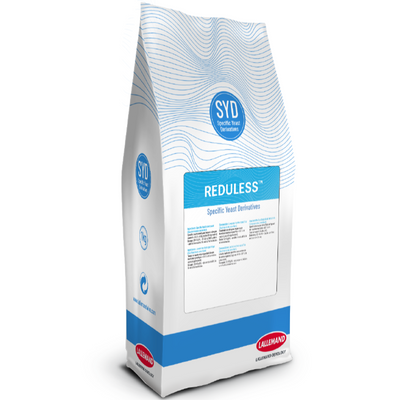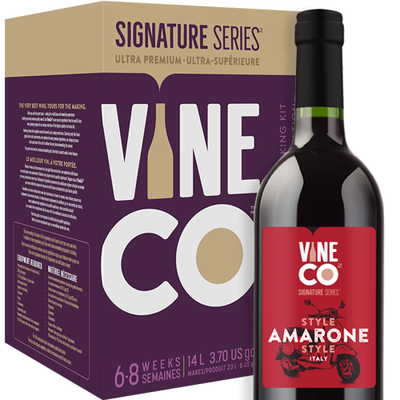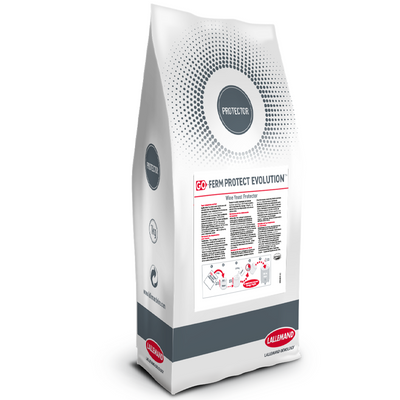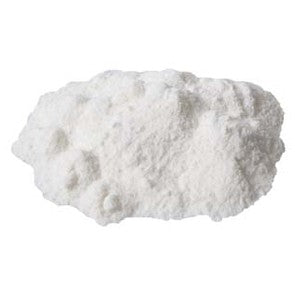Ingredients
-
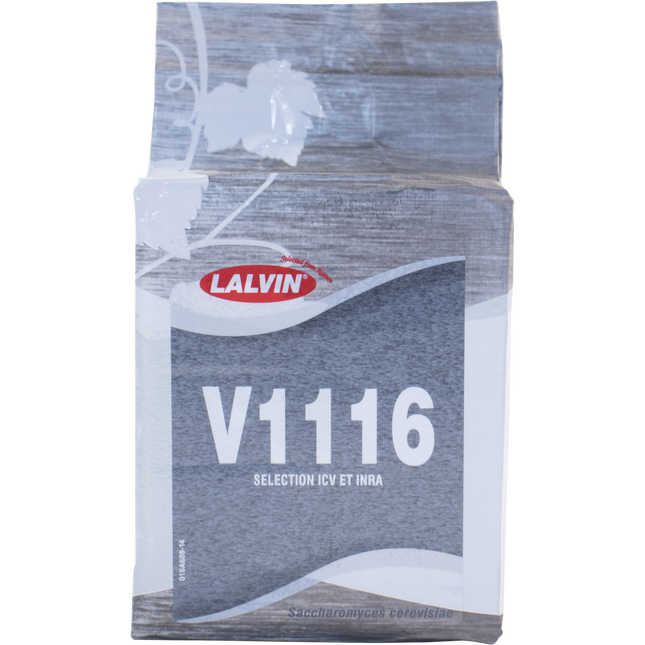
Lalvin K1 (V1116) | Dry Wine Yeast
Lalvin K1 (V1116) is the perfect choice for winemakers aiming to craft fresh, aromatic white wines and vibrant fruit-based fermentations Whether perfecting a crisp Chenin Blanc, crafting a sparkling wine, or fermenting a bright fruit wine, K1 (V1116) delivers unmatched clarity, brightness, and aromatic intensity in every batch Enhance freshness and aromatic intensity in white wines and fruit fermentations Lalvin K1 (V1116) is a robust and versatile wine yeast strain, selected by the Institut Coopératif du Vin (ICV) in Montpellier, France. Renowned for its strong fermentation kinetics and high ester production, K1 (V1116) is ideal for crafting crisp white wines, sparkling wines, and fruit-based fermentations. Its resilience under challenging conditions makes it a reliable choice for both professional and home winemakers. High Ester Production: Enhances floral and fruity aromas, including notes of apple, citrus, and tropical fruits. Cold Fermentation Tolerance: Performs well at low temperatures, preserving delicate aromatics. Alcohol Tolerance: Effective up to 18% ABV, allowing for complete fermentation in high-sugar musts. Fermentation Range: Operates optimally between 50°F (10°C) and 95°F (35°C), providing flexibility across various wine styles. Low Nutrient Requirements: Thrives in musts with low nutrient content, reducing the need for supplementation. Low H₂S and SO₂ Production: Ensures clean fermentations with minimal off-flavors. Applications: White Wines: Sauvignon Blanc, Chenin Blanc, Riesling, and Pinot Grigio, where bright fruit and floral characteristics are desired. Sparkling Wines: Suitable for traditional method and Charmat process, promoting fine bubbles and crisp acidity. Fruit Wines: Enhances the natural fruit expression in apple, pear, peach, and berry wines. Mead and Cider: Promotes clean, crisp fermentations with bright aromatics. Flavor Profile: Bright Citrus & Apple: Sharp notes of green apple, lemon zest, and lime. Tropical Fruit Hints: Subtle expressions of pineapple and passion fruit. Floral Undertones: Light notes of honeysuckle and orange blossom contribute to aromatic lift. Clean, Crisp Finish: Maintains a fresh, pure expression of fruit with minimal sulfur notes. Usage: Rehydration: Rehydrate in 10 times its weight of chlorine-free water at 95°F (35°C) for 15–20 minutes. Stir gently to avoid clumping. Pitch Rate: Use 1–1.5 grams per gallon (0.25–0.4 grams per liter) for optimal fermentation and flavor development. Nutrient Addition: While K1 (V1116) has low nutrient requirements, supplementation is recommended in low-nitrogen musts to prevent sluggish fermentation. Fermentation Temperature: Maintain between 50°F and 95°F to optimize ester formation and maintain clarity. Click here for a PDF of the MoreWine Manual on re-hydrating wine yeast. Click here for a PDF of the MoreWine Yeast and Grape Pairing Guide.
$1.99
-

Viniflora® CH35 | Dry Malolactic Bacteria | 1.5 g
Selected and adapted especially for direct inoculation of rose and white wines Strong fermenter under harsh white wine conditions Direct inoculation, freeze-dried bacteria – does not require rehydration High numbers of active cells which ensure a quick start of fermentation Good for 66 gallons Viniflora CH35 is a freeze-dried culture of Oenococcus oeni. This malolactic bacteria has been selected and adapted especially for direct inoculation of rose and white wines. Viniflora CH35 has been selected for its outstanding performance in malolactic fermentation of difficult white wines. This strain is the perfect match for rose and white wines but can also be used with success in red wines. Application: Viniflora CH35 should be added to dry wine, right after the alcoholic fermentation. No rehydration or reactivation is required. For more information about ML Bacteria, please see MoreWine!'s Guide to Malolactic Fermentation. Characteristics: Outstanding tolerance to low pH and elevated levels of SO2 (down to pH 3.0 and up to 50ppm!) Strong fermenter under harsh white wine conditions Clean and fruity flavor profile No production of biogenic amines High inoculation level encourages a completed malolactic fermentation 14% alcohol tolerance Key Features: Recommended for white wines Direct inoculation, freeze-dried bacteria – does not require rehydration High numbers of active cells which ensure a quick start of fermentation This strain is pH tolerant to 3.0, Total SO2 to 45 ppm (white wines), temperature 59 – 77 ͦF and alcohol to 14% (v/v) Low level of volatile acidity Cinnamoyl Esterase Negative
$31.99
-
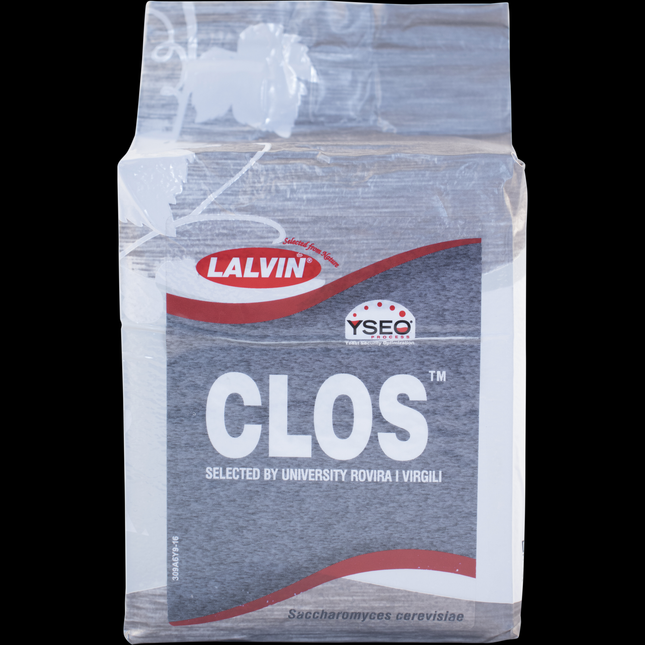
Clos Dry Wine Yeast
Clos is a yeast strain isolated from the Priorat region of Spain. Clos was chosen for its ability to re-enforce structure while emphasizing aromatic complexity and mouthfeel. Sweet red fruit (cherry), with pepper and chocolate notes are typical of what Clos brings to a fermentation. With hot climate/high Brix fruit, Clos is a great choice for its high alcohol tolerance (17%), low Nitrogen needs and short lag phase. Clos also does well with higher fermentation temperatures (max 95 F) and shows a good compatibility with MLF. Highly recommended for Syrah, Petite Syrah, Grenache, Tempranillo and Carignane. Click here for a PDF of the MoreWine Manual on re-hydrating wine yeast. Click here for a PDF of the MoreWine Yeast and Grape Pairing Guide.
$2.99
-
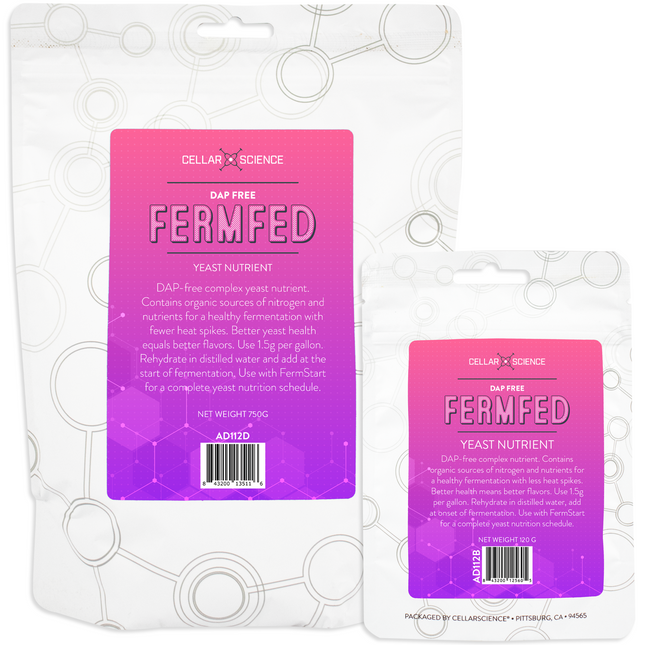
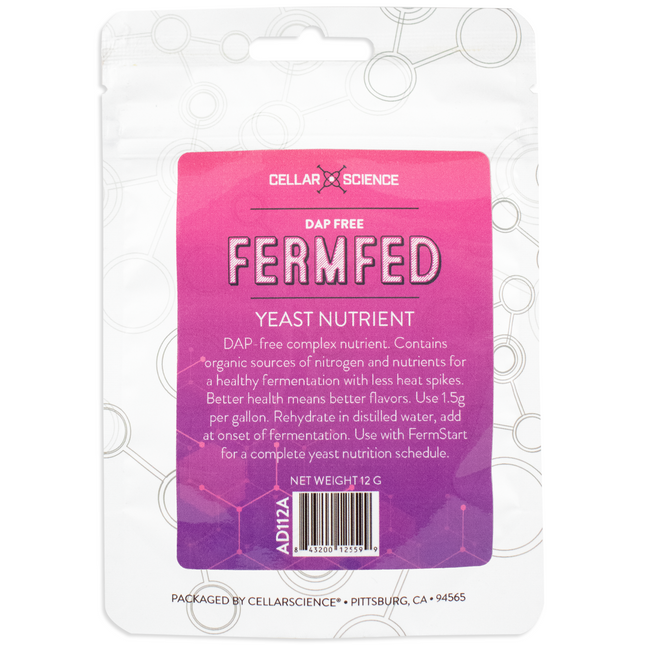
CellarScience® FermFed DAP Free | Yeast Nutrient
Feed your fermentation with FermFed DAP Free by CellarScience®. The 100% natural formulation of FermFed DAP Free is derived from the autolysis of very specific yeast strains naturally high in free amino acids, sterols, mannoproteins, zinc, magnesium, and niacin, along with vitamins B1, B2, B5, B6, and B12 for a complete yeast health regimen. As the name suggests, this unique formulation does not contain the traditional inorganic diammonium phosphate, but does provide organically derived nitrogen. How Much Do I Add and When? The recommendation that covers most fermentations is to add 1.5 gram per gallon of FermFed DAP Free at the onset of fermentation and then add 1 gram per gallon of FermFed after 1/3 sugar depletion. Mix the nutrients in a small slurry of water and add to the fermentation. Read more below if you are interested in measuring YAN (Yeast Available Nitrogen) and adjusting your nutrient schedule accordingly. The Science of How it Works The different components of FermFed DAP Free work in different ways to feed and protect your yeast. The complex and organic nitrogen in FermFed DAP Free helps eliminate excessive yeast growth in the initial phases, reducing fermentation heat spikes at the start of fermentation. Included sterols make the yeast membrane more resistant to alcohol and to high temperatures. The collection of B-vitamins along with zinc and magnesium are essential for enzymatic activity, alcohol tolerance, and yeast health. Mannoproteins help avoid the aromatic stripping during the fermentation by binding esters and terpenes and not allowing them to be driven off by CO2. The included yeast hull components act as receptors to bind up fatty acids that can accumulate and cause stuck fermentations. Advanced - Adjusting Your Nutrient Schedule Based on YAN (Yeast Available Nitrogen) In addition to the nutrients provided by FermFed or FermFed DAP Free, yeast need a certain level of nitrogen to perform adequately. If deprived of nitrogen, yeast are more likely to produce off flavors, most notably hydrogen sulfide. When added at the rate of 1 gram per gallon, FermFed provides 38ppm of YAN while FermFed DAP Free adds 20ppm when added at the rate of 1.5 gram per gallon. How much YAN do you need? Acceptable levels range from 175 to 300ppm. YAN levels in grapes vary, with grapes from warmer climates often having less. The best practice is to measure your grapes using a commercial wine lab or the Vinmetrica YAN Test Kit along with a Vinmetrica Meter. If you know your YAN the following is a good general guide: 175ppm or above = FermFed DAP Free @ onset + FermFed DAP Free @ 1/3 completion (adds 40ppm YAN) 150ppm or above = FermFed DAP Free @ onset + FermFed @ 1/3 completion (adds 58ppm YAN) 125ppm or above = FermFed @ onset + FermFed @ 1/3 completion (adds 72ppm YAN) Below 125ppm = FermFed @ onset + FermFed @ 1/3 completion + extra DAP For a full yeast nutritional plan, use FermStart when rehydrating your yeast, use FermFed DAP Free at the onset of fermentation, and use FermFed after 1/3 sugar depletion.
$2.49
-
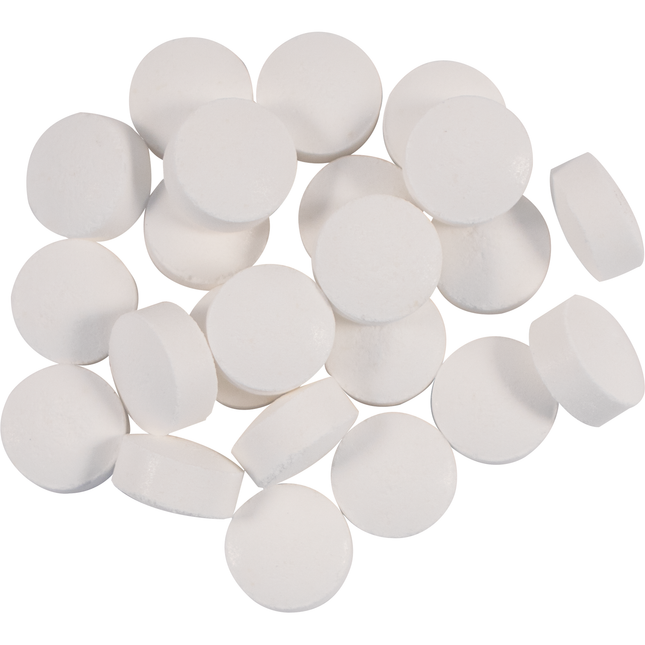
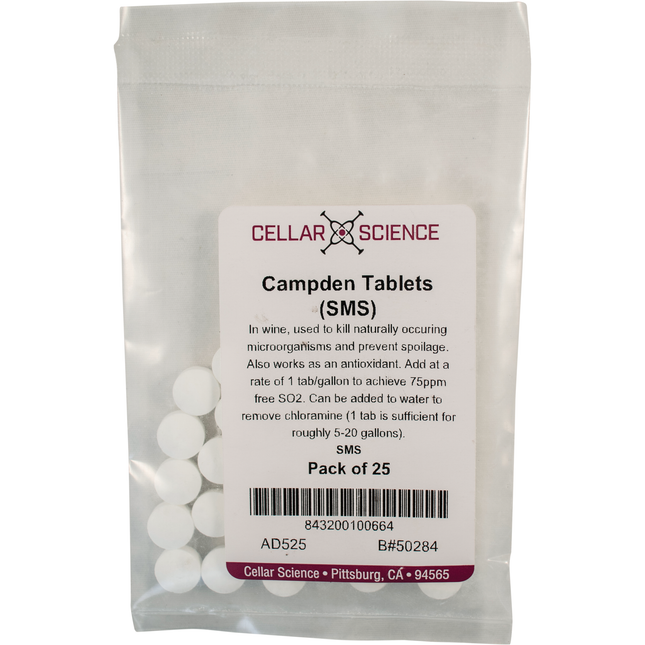
Campden Tablets - Sodium Metabisulphite (25 Tablets)
An essential ingredient in winemaking. Sodium Metabisulfite, (often referred to as SO2, sulfites meta, or meta-bi) has several uses in winemaking. It is used at the crush, to help control the spoilage bacteria and indigenous yeast that may already be present on the fruit or the equipment. The amount used is enough to stop most of the unwanted organisms but not enough to hinder a cultured yeast, which has a higher tolerance to sulfites. This effectively “wipes the slate clean” for the cultured yeast to step in and rapidly colonize the must. Sulfites also help to inhibit the enzymatic browning of musts and finished wines. During storage and in the bottle, sulfites at the proper levels will protect a wine by continuing to inhibit spoilage organisms, as well as by scavenging oxygen. Campden tablets are Sodium Metabisulfite in an easier to measure format. Adds 75 ppm of sulfites at the rate of one tablet per gallon. These must be fully ground-up prior to use. Potassium Meta-bi in powder form, AD495 or AD500, is much easier to use if you have a scale and does not add sodium to your wine. It is possible the sodium could contribute a very small salty flavor. Especially when making white wine it is preferable to add potassium over sodium since added potassium can later help with cold stabilization. For more information refer to our MoreManuals! on Red or White Winemaking or one of the winemaking books that we offer for a complete explanation on how to properly manage sulfites.
$1.99
-

Stavin Hungarian Oak Cubes | Medium Plus Toast
Medium Plus toast cubes manufactured by StaVin. Cubes have a longer contact time than traditional chips do, which make them better for long-term aging of wines and beers. Also, longer contact time means longer extraction of flavors (3-6 months), which leads to a more complex combination of flavors. Chips are usually done giving flavor after a week, there by contributing a harsh, flat oak flavor. Click here for a PDF of the MoreWine Oak Cube Dosages.
$4.69
-


Red Star | Premier Rouge (Pasteur Red) | Dry Wine Yeast
Red Star Pasteur Red has been rebranded as Premier Rouge but is the same exact yeast stratin. Known as a strong fermenter for producing full bodied reds, especially good with grapes from the Cabernet and Zinfandel families. Ferments from 60 to 80 degrees. Click here for a PDF of the MoreWine Manual on re-hydrating wine yeast.
$1.79
-

Lallemand Assmanshausen (AMH) | Dry Wine Yeast
Assmanshausen (AMH) is the ideal choice for winemakers seeking to produce elegant, terroir-driven red wines with aromatic complexity and structured tannins Whether perfecting a Pinot Noir, elevating the freshness of Gamay, or crafting a refined Burgundy-style blend, AMH consistently delivers elegance, balance, and nuanced flavor in every bottle Enhanced aromatics and structured tannins for elegant red wines Assmanshausen (AMH) is a specialty wine yeast strain prized for its ability to enhance aromatic complexity and develop structured tannins in cool-climate red wines. Originally selected from the Assmanshausen region in Germany, this strain is ideal for crafting elegant, age-worthy wines that benefit from extended fermentation and maceration periods. Its steady, controlled fermentation allows for nuanced expression of delicate fruit and spice characteristics. Enhanced Aromatics: Elevates subtle cherry, cranberry, and spice notes, ideal for cool-climate reds. Structured Tannin Development: Promotes refined tannin integration, enhancing mouthfeel and ageability. Alcohol Tolerance: Effective up to 14% ABV, suitable for balanced red wine styles. Temperature Range: Performs optimally between 59°F (15°C) and 82°F (28°C), allowing for slow, controlled fermentations. Low Flocculation: Extended suspension during fermentation aids in complex flavor development. Minimal SO₂ Production: Preserves clean aromatics and avoids off-flavors. Applications: Pinot Noir: Enhances delicate fruit and floral notes while promoting smooth tannin development. Gamay: Elevates fresh berry expressions and accentuates vibrant acidity. Cool-Climate Reds: Ideal for crafting structured, elegant wines that express terroir. Blended Reds: Perfect for Burgundy-style blends and Beaujolais Nouveau. Flavor Profile: Red Fruits: Highlights cherry, cranberry, and raspberry for a bright, aromatic profile. Spice and Floral Notes: Subtle expressions of clove, cinnamon, and violet enhance complexity. Silky Tannins: Promotes refined tannin structure for a smooth, elegant mouthfeel. Aging Potential: Supports graceful aging with layered complexity and aromatic depth. Guidelines: Rehydration: Rehydrate in 10 times its weight of chlorine-free water at 95°F (35°C) for 15–20 minutes. Stir gently to prevent clumping. Pitch Rate: Use 1–1.5 grams per gallon (0.25–0.4 grams per liter) for optimal fermentation and aromatic expression. Nutrient Addition: Supplement with yeast nutrients, particularly in low-nitrogen musts, to prevent sluggish fermentation. Fermentation Temperature: Maintain between 59°F and 82°F for optimal aromatic expression and structured tannin development. Extended Maceration: Suitable for long fermentations to develop depth and complexity. Click here for a PDF of the MoreWine Manual on re-hydrating wine yeast. Click here for a PDF of the MoreWine Yeast and Grape Pairing Guide.
$3.19
-


WineStix - Medium Toast French Oak Carboy 2 Pack
WineStix are a new form of oak integration for wine, designed to give new barrel flavors with an extraction time similar to cubes. The combination of Short and Long grains result in amazing gradience of flavor similar to barrels, while extracting significantly quicker! These are Medium toast French Oak staves, and depending on the wine, will impart flavors of vanilla and coffee, while clearing out negative vegetal flavors and astringency from the wine. This is a two pack of WineStix, sized specifically for a 5-6 gallon carboy of wine. WineStix will easily fit through the mouth of a glass carboy, and can be attached to a string via the drilled hole for easy removal! One carboy Winestix will treat 5-6 gallons of wine.
$12.99
-

Tannin Riche Extra
This product replaces our TAN140 - Tannin Plus Enological tannins offer the winemaker the possibility to add refined, highly-bindable tannin to your wine at any stage during the process. Benefits can include increased structure and mouthfeel, color stabilization, stability, anti-oxidative qualities, and overall complexity. Tannins can reduce vegetal/herbaceous characteristics and perceived astringency. We offer four types of oenolgical tannins, two for use during fermentation, and two for use during the aging phase. Aging Tannins Tannin Riche Extra is a preparation of 100% American oak tannin that has been lightly toasted to impart a soft, aromatic character while enhancing the structure and organoleptic complexity of a wine. Tannin Riche Extra is a great tool for imparting hints of coconut, a heightened vanillin oak character and a smooth finish to your wines. Although designed for fine-tuning a wine, Tannin Riche Extra still maintains the regular properties associated with the use of tannins such as helping with clarification, stability, oxidation, and aging. Works well in conjunction with low doses of other tannins (i.e: Tannin Complex & FT Blanc Soft). To Use: Dissolve the tannin in 10 times its weight in warm water (95F/35C). Add to the wine during a punch-down or pump-over for good mixing. Addition of Tannin Plus should be made a minimum of three weeks before bottling. Recommended dosage: 0.2-0.4 g/gal A rough approximate of weight is 3/4 tsp = 1 gram. We highly recommend using a scale to weigh the product for an accurate dose. We do not recommend relying on these rough conversions for accurate dosage rates.
$4.99
-


CellarScience® FermFed | Yeast Nutrient
Help your yeast reach the end of fermentation safely while producing amazing flavors with FermFed by CellarScience®. Yeast that are given FermFed have a higher likelihood of fermenting without issue while producing wines with more intense flavors and aromas. FermFed is a complex nutrient blend of diammonium phosphate, thiamin, amino acids, sterols, pantothenic acid, mannoproteins, protective microelements derived from yeast hulls, and vitamins B2, B5, B6, & B12. FermFed also contains the organic and inorganic nitrogen (DAP) that yeast need. How Much Do I Add and When? The recommendation that covers most fermentations is to add 1 gram per gallon of FermFed DAP Free at the onset of fermentation and then add 1 gram per gallon of FermFed after 1/3 sugar depletion. Mix the nutrients in a small slurry of water and add to the fermentation. Read more below if you are interested in measuring YAN (Yeast Available Nitrogen) and adjusting your nutrient schedule accordingly. The Science of How it Works The different components of FermFed work in different ways to feed and protect your yeast. Grape must/juice is often deficient in assimilable nitrogen. When yeast do not have enough nitrogen, they are more likely to produce hydrogen sulfide (rotten eggs). FermFed helps to eliminate this problem by providing enough nitrogen for most situations. Yeast get weaker as they divide and multiply. They run the risk of not being able to properly finish fermentation as the alcohol content rises. Feeding them sterols help cells maintain membrane fluidity so that the yeast can properly function as alcohol and other harmful compounds in the fermentation conspire against them. Mannoprotein molecules bind esters and terpenes and work as an anchor to keep them in solution so they are not driven off by CO2 during fermentation. Pantothenic acid is added to help reduce the production of hydrogen sulfide. Thiamine is important for yeast metabolism. Vitamins B2, B5, B6, & B12 are important for general yeast health. Advanced - Adjusting Your Nutrient Schedule Based on YAN (Yeast Available Nitrogen) In addition to the nutrients provided by FermFed or FermFed DAP Free, yeast need a certain level of nitrogen to perform adequately. If deprived of nitrogen, yeast are more likely to produce off flavors, most notably hydrogen sulfide. When added at the rate of 1 gram per gallon, FermFed provides 38ppm of YAN while FermFed DAP Free adds 20ppm. How much YAN do you need? Acceptable levels range from 175 to 300ppm. YAN levels in grapes vary, with grapes from warmer climates often having less. The best practice is to measure your grapes using a commercial wine lab or the Vinmetrica YAN Test Kit along with a Vinmetrica Meter. If you know your YAN the following is a good general guide: 175ppm or above = FermFed DAP Free @ onset + FermFed DAP Free @ 1/3 completion (adds 40ppm YAN) 150ppm or above = FermFed DAP Free @ onset + FermFed @ 1/3 completion (adds 58ppm YAN) 125ppm or above = FermFed @ onset + FermFed @ 1/3 completion (adds 72ppm YAN) Below 125ppm = FermFed @ onset + FermFed @ 1/3 completion + extra DAP The best way for to test for YAN is using a lab or a home testing solution like this YAN kit from Vinmetrica. An acceptable level for YAN is between 200 to 350ppm FermFed provides 38ppm of Yan when added at the rate of 1 gram per gallon. The reason we don’t automatically use FermFed for a Stage 2 is that we don’t want to introduce excessive amounts of DAP into the wine if your yeast don’t need it. For a full yeast nutritional plan, use FermStart when rehydrating your yeast, use FermFed DAP Free at the onset of fermentation, and use FermFed after 1/3 sugar depletion.
$1.49
-


Delvozyme® (Lysozyme)
Wine Making Use Delvozyme (Lysozyme, Lysovin) for controlling lactic acid bacteria growth in your wine. Isolated from egg whites, this enzyme will degrade the cell wall of gram positive bacteria, but will not affect yeast or gram negative bacteria such as Acetobacter. Delvozyme can be used for both Red and White Wine Malo Fermentation. Dosage: To Delay Malolactic Fermentation: Red Wine - add to grapes at 100 - 200 ppm, or 0.38 - 0.76 grams per gallon. White Wine - Add to must at 200 - 300 ppm, or 0.76 - 1.14 grams per gallon. To Block Malolactic Fermentation: White Wine - Add to must or wine at 300 - 500 ppm, or 1.14 - 1.90 grams per gallon. Stabilizing wine after MLF is complete: Add to barrel during storage at 250 - 500 ppm, or 0.95 - 1.90 grams per gallon. When blending partial and complete MLF wines: Add immeditatley after blending at 300 - 500 ppm, or 1.14 - 1.90 grams per gallon, to reduce the risk of further malolactic fermentation (MLF). Within several days any lactic should expire. For sluggish or stuck yeast fermentation: Red Wine - Add at 150 - 400 ppm, or 0.57 - 1.52 grams per gallon. White Wine - add at 300 - 500 ppm, or 1.14 - 1.90 grams per gallon. Directions for use: You can make a 10% solution of Delvozyme in water (100 grams per liter of water). However we find the easiest method is to add the desired dry weight of Lysovin in 5x its weight of warm(tepid) water. Mix for one minute, allow this mixture to stand for 45 minutes and add to must, juice or wine while mixing well. Allow 24 - 48 hours for reaction to complete. **Note: 3tsp Delvozyme = 5g Beer Making Delvozyme can be used in beer making as well. Use either in the starter (recommended if you make starters) or when pitching (adding) the yeast to the wort, do not use over 140 F. Recommended dosages is 1 tsp per 5 gallons of wort. According to studies it has no effect on flavor or clarity. Storage: Should be stored at room temperatures in a dry environment, can be stored up to 5 years.
$34.99
-
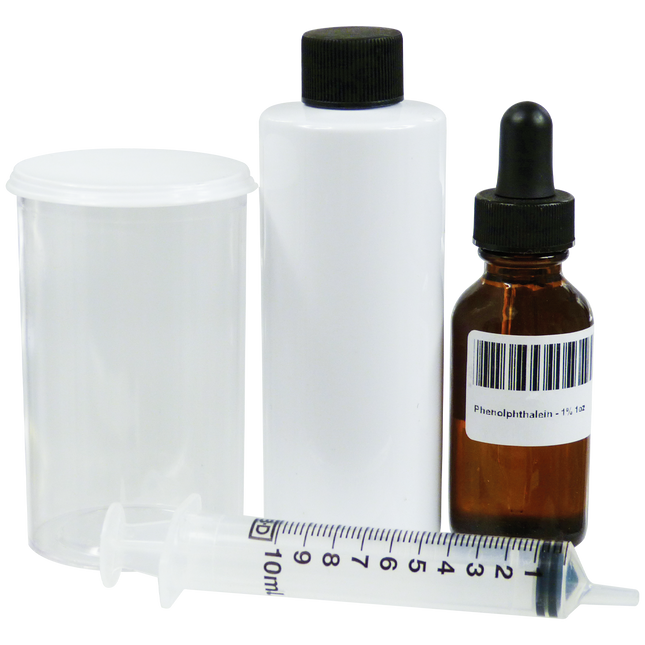
Acid Test Kit
Used to determine the Total Acidity in a wine, the Acid Test Kit is an invaluable tool for any home winemaker. Total Acidity measurements are important to winemaking because the correct amount of acidity is key to maintaining a wine which is balanced in flavor and stable for ageing. Kit Contents: Large Reaction Vial 10mL Syringe 4oz of Sodium Hydroxide Reagent Phenolphthalein Indicator in 1oz Dropper Jar Reagent Stability Information: Sodium Hydroxide Solution - 0.1 Normal (2 year shelf life cool & closed, 3 month shelf life cool and opened) Phenolphthalein Indicator - 1.0% (5 year + Shelf life)
$12.99
-

WineStix - Medium Plus Toast French Oak Carboy 2 Pack
WineStix are a new form of oak integration for wine, designed to give new barrel flavors with an extraction time similar to cubes. The combination of Short and Long grains result in amazing gradience of flavor similar to barrels, while extracting significantly quicker! These are Medium Plus toast French Oak staves, and depending on the wine, will impart roasted toasty aromas, with flavors of coffee and caramel sweetness the length of the palate. This is a two pack of WineStix, sized specifically for a 5-6 gallon carboy of wine. WineStix will easily fit through the mouth of a glass carboy, and can be attached to a string via the drilled hole for easy removal! 1" W x 8.5" Long One carboy Winestix will treat 5-6 gallons of wine.
$15.99
-


W15 Dry Wine Yeast
A fructophile for clean, low temperature ferments. W15 was isolated in 1991 from high quality Muller Thurgau must originating in the vineyards at the Viticulture Research Station in Wadenswil, Switzerland. W15 was developed to ferment dry whites at moderate speeds where bright fruit and heavy mouthfeel are desired. This yeast does just that, and it does so while respecting the varietal characteristics of the fruit. W15 can also be used to ferment high quality, fruit focused, light red wines from Pinot Noir and cool-climate Syrah. Short lag pahse, moderate rate fermenter at temperature ranges between 50 to 81 degrees F. Alcohol tolerant to 16%. W15 produces higher levels of glycerol and succinic acid especially at higher fermentation temperatures (above 77 degrees F). Click here for a PDF of the MoreWine Manual on re-hydrating wine yeast. Click here for a PDF of the MoreWine Yeast and Grape Pairing Guide.
$2.99
-

Red Star | Cotes des Blanc | Dry Wine Yeast | 5 g
Also called Epernay II. Produces fine white wines with fruity/estery aromas. A steady, yet moderate to slow fermenter, it is easy to stop fermentation in cases where residual sugar is desired. Recommended for fruit wines, ciders and meads as well. Ferments from 50 to 80 degrees. Click here for a PDF of the MoreWine Manual on re-hydrating wine yeast.
$1.99
-

Xoakers - French Oak, Medium Plus
Xoakers are 1" Solid Oak spheres made from high quality French oak and seasoned for a minimum of 24 months. They will contribute a complex oak character while softening and rounding the wine as well. What sets these apart though, are their shape and ease of use. The uniform size allows for precise dosing, and easy removal once complete. Whether you are using carboys or neutral barrels, additions are as simple as counting out however many Xoakers you need, and tossing them in. Every vessel will be oaked to the same extent when using these, and no need to weigh them out! Removing them is as simple as turning over your carboy or barrel, and watching them roll out! These can be used in both red and white wines, and are perfect for carboys, barrels, small tanks, and kegs. Ideal oak for the home winemaker! These Convection Toasted Medium Plus French Oak Xoakers are packed in Mylar bags, and will contribute various flavors depending on the wine. The 8 pack will treat 4-8 gallons & 1 lb will treat 35-70 gallons. Dosage: 1-2 Xoakers / Gallon (3.78 L) wine (depends on desired Oak Impact) Contact Time: 4 Month Minimum Recommended Useful Life in Wine: 12 Months Size: 1" Diameter Spheres, 70 French Oak Xoakers / lb Liquid Displacement: .10 gal (.41 L) Toast Level: Med +
$8.49
-

Lallemand | LalVin 31™ (MBR®) | Dry Malolactic Bacteria
LalVin 31™ performs well under such stressful conditions as low pH or low temperature In white wines it is known for acid reduction, light buttery flavor, respect for fruit, increased body and length of finish In red wines it is known for increasing berry fruit flavors and mouthfeel Lallemand Oenology specializes in the development, production, and marketing of top-grade yeast and bacteria MBR 31 was chosen by the ITV in France for use in white and red wines for high activity and positive flavor characteristics. In white wines it is known for acid reduction, light buttery flavor, respect for fruit, increased body and length of finish. In red wines it is known for increasing berry fruit flavors and mouthfeel. MBR 31 is a good strain for use at temperatures as low as 15°C (59°F). Of the MBR strains, it is the most tolerant of low pH. For more information about ML Bacteria, please see MoreWine!'s Guide to Malolactic Fermentation. 2.5 g: good for 66 gallons 25 g: good for 660 gallons Alcohol tolerance: <14% v/v. SO2 tolerance: <45 ppm pH: >3.1 Temperature: >55°F You can't store malolactic bacteria once the package has been opened. Note: Malolactic bacteria added during the ferment will compete with the yeast for nutrients and are antagonistic to yeast, sometimes causing problems resulting in stuck or stalled fermentations. The best time to add an ML culture is after racking off the gross lees.
$38.99
-


Lalvin CY3079™ | Dry Wine Yeast
Lalvin CY3079 is the go-to choice for winemakers aiming to craft full-bodied, complex Chardonnay and barrel-aged whites with rich mouthfeel, creamy texture, and elegant oak integration Whether perfecting a Chardonnay or refining a white Burgundy, CY3079 ensures a smooth, layered finish with exceptional aromatic clarity Enhance complexity and mouthfeel in premium Chardonnay and barrel-aged whites Lalvin CY3079 is a specially selected wine yeast strain renowned for its ability to develop rich mouthfeel, enhanced complexity, and buttery characteristics during fermentation. Perfectly suited for Chardonnay and other barrel-aged white wines, CY3079 promotes the release of polysaccharides and encourages malolactic fermentation, resulting in wines with balanced acidity, smooth texture, and vibrant aromatics. Enhanced Mouthfeel: Promotes polysaccharide synthesis, delivering a creamy, full-bodied texture. Malolactic Compatibility: Optimized for seamless transition into malolactic fermentation, enhancing buttery and nutty notes. Aromatic Development: Elevates apple, pear, vanilla, and toasted almond aromatics. Alcohol Tolerance: Supports ABV levels up to 15%, allowing complete fermentation in high-sugar musts. Attenuation Rate: Typically achieves 85–90% attenuation, ensuring a dry, well-structured finish. Temperature Range: Performs optimally between 59°F (15°C) and 77°F (25°C), with the best expression of mouthfeel and complexity around 64°F (18°C). Medium Flocculation: Settles well post-fermentation, enhancing clarity and reducing sediment. Applications: Chardonnay: Ideal for barrel-fermented Chardonnay, bringing forward rich mouthfeel and buttery notes. White Burgundy: Elevates minerality and complexity, emphasizing ripe fruit and toasty oak integration. Viognier: Enhances stone fruit and floral notes, adding depth and roundness. Barrel-Aged Whites: Perfect for oaked Sauvignon Blanc and Semillon, adding creaminess and layered complexity. Flavor Profile: Stone Fruits & Citrus: Boosts expressions of apple, pear, and lemon zest. Buttery & Nutty Notes: Develops butter, vanilla, and toasted almond during malolactic fermentation. Rich Mouthfeel: Promotes a creamy, well-rounded palate with smooth, integrated texture. Oak Integration: Complements toasted oak, enhancing complexity and balance. Usage: Rehydration: Rehydrate in 10 times its weight of chlorine-free water at 95°F (35°C) for 15–20 minutes. Stir gently to avoid clumping. Pitch Rate: Use 1–1.5 grams per gallon (0.25–0.4 grams per liter) for optimal mouthfeel and flavor development. Nutrient Addition: Supplement with yeast nutrient to optimize fermentation and promote aromatic development. Fermentation Temperature: Maintain between 59°F (15°C) and 77°F (25°C), with 64°F (18°C) being ideal for creaminess and complexity. Barrel Fermentation: Ideal for in-barrel fermentations to enhance oak integration and complexity. Click here for a PDF of the MoreWine Manual on re-hydrating wine yeast. Click here for a PDF of the MoreWine Yeast and Grape Pairing Guide.
$2.99
-


58W3 Dry Wine Yeast
A yeast strain that really brings out aromatic components in white wines, especially Pinot Gris, Gewurztraminer, Riesling, Viognier and Semillion. Also a great choice for mead fermenations where it has a significant aroma/flavor input. Specifically Fruity/Floral aromas are emphasized through the natural liberation of terpenes found in these varieties. What we think is particularly unique about this strain is the creation of smoky/spicy aromas. Also selected as a commercial yeast strain for its ability to create mouthfeel volume and richness. So to recap - fruity/floral/smoky/spicy aromas and flavors with good mouthfeel... where do we sign up! Lallemand recommends adding Go-Ferm during rehydration and Fermaid K to the ferment to ensure that this strain ferments to dryness. Click here for a PDF of the MoreWine Manual on re-hydrating wine yeast. Click here for a PDF of the MoreWine Yeast and Grape Pairing Guide.
$3.19
-

American Medium Toast Oak Chips
Our high quality, yet inexpensive American oak chips. These are toasted to a Medium Toast.
$2.39
-

Red Star | Premier Cuvee | Dry Wine Yeast | 5 g
Prise de Mousse strain. Fast starting with steady, strong fermentation kinetics. Low foaming action is well suited to barrel fermentations. Clean neutral flavor. Good all-around choice for Reds, Whites and especially Champagnes. Also works well for meads. Alcohol tolerance to 18%. Will also ferment from 50 to 80 degrees. Click here for a PDF of the MoreWine Manual on re-hydrating wine yeast.
$1.79
-


Lallzyme Cuvee Blanc | Fermentation Enzyme for White Wines
Lallzyme Cuvee Blanc – Enzyme for Aroma Release and Finesse in White and Sparkling Wines Enhances aroma expression by unlocking bound terpene and thiol precursors Improves clarification and filterability through efficient pectin breakdown Increases finesse and texture by gently releasing polysaccharides Ideal for varietal whites and sparkling base wines where delicacy is key Balanced glycosidase activity preserves freshness without compromising stability Lallzyme Cuvee Blanc is a highly specific enzyme developed by Lallemand for the production of elegant, aromatic white and sparkling wines. It offers a delicate balance of pectinase and glycosidase activity that breaks down grape cell walls to improve clarification while simultaneously releasing aroma precursors trapped in glycosidic form. This selective activity enhances varietal expression—especially in terpene- and thiol-rich varieties—without producing off-flavors or excessive bitterness. The result is a wine with lifted aromatics, better mouthfeel, and improved stability, ideal for styles requiring precision and finesse. Protocol Dilute Lallzyme Cuvee Blanc in 10 times its weight of chlorine-free water. Add to juice or wine at the preferred stage—either pre-fermentation for aroma release and settling, or post-fermentation for finishing and clarification. Ensure even distribution by mixing thoroughly. Optimal temperature range is 12–20°C. Avoid use below 10°C or in combination with bentonite or SO₂ during addition. Usage Rates Recommended dosage: 2–4 grams per hectoliter = 0.02–0.04 grams per liter = 0.076–0.151 grams per gallon Use 2 g/hL for lighter aromatics or wines already showing good varietal character. Increase to 4 g/hL in more neutral juices or when maximizing aromatic potential is desired. Allow adequate contact time—typically 24 to 48 hours—depending on the winemaking stage and style.
$2.99
-
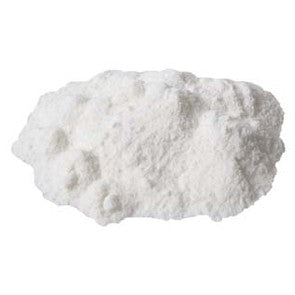
Polycacel
This product replaces our FIN73 - Polylact Polycacel can be used both curatively and preventatively against browning and pinking in white juice or in wine under long term storage conditions. Polycacel helps improve wine color and overall organoleptic properties. A is a blend of polyvinylpolypyrolidone (PVPP), soluble postassium casein and micropulverized cellulose. This specific blend allows for more complete action on phenolic compounds while avoiding over-stripping the wine. To Use: Slowly mix Polycacel in 20 times its weight in cold water (do not use juice or wine). Allow the mixture to stand for 2 hours. For enhanced homogenization, gradually add the Polycacel to the wine container while mixing. Dosages: To protect from oxidation, add to wine and mix thoroughly: 150-300 ppm To treat oxidized juice, add during cold settling: 300-700 ppm
$5.99

